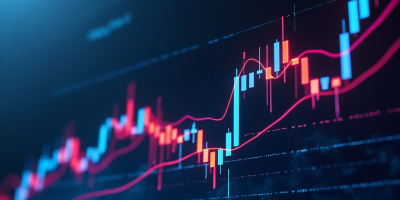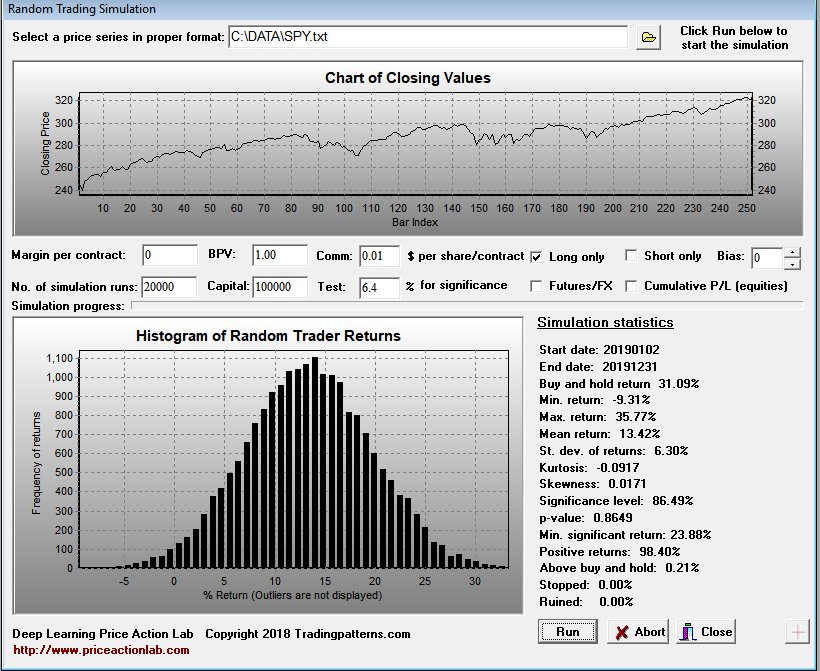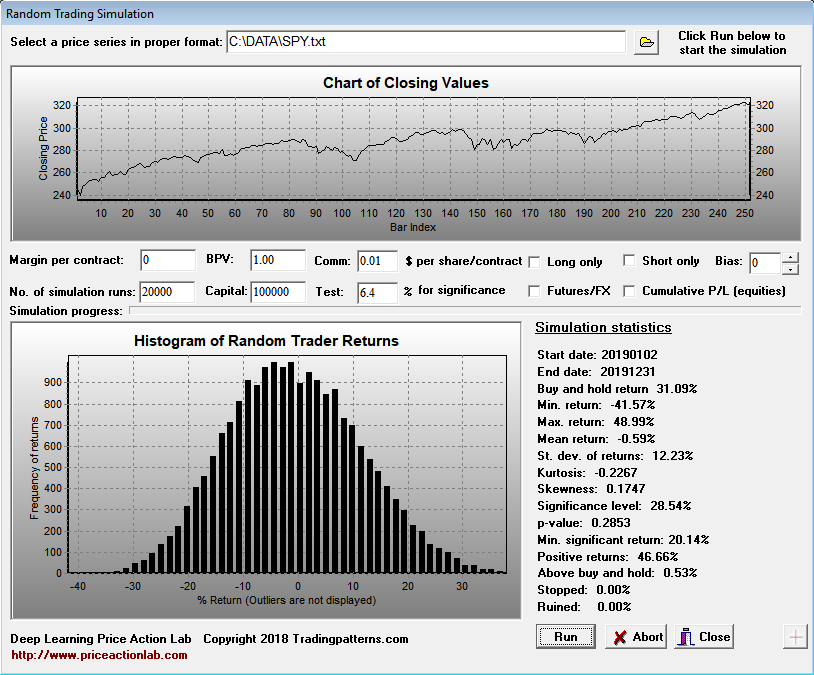AI and machine learning funds rose 6.4% in 2019, according to popular gauge. As shown in the article, these funds performed worse than random traders. We list a few possible reasons for these disappointing results.
According to Eurekahedge, AI and machine learning funds rose 6.4% in 2019 while the S&P 500 index rose 28.9% and 31.5% on a total return basis.
Below we rank the average performance of AI and machine learning funds against 20,000 random traders that used a fair coin to execute long-only trades in SPY ETF at the close of each day in 2019. Heads is signal to buy and tails to sell. Commission is $0.01 per share. We use the Random Trading Simulation tool available in DLPAL S software to rank average fund performance against random traders for the purpose of estimating significance.
More than 86% of the random traders made more than 6.4%, which is our test statistic. In fact, the average random long-only trader made 13.4% and this is nearly double the average AI and machine learning fund return!
Note that 98.4% of random traders profited in 2019 while only 0.21% made more than buy and hold. The minimum return to claim statistical significance (p=0.05) was +23.88% and lower than that may be attributed to luck rather than skill with high probability.
What about long/short random traders? Obviously, they did worse than long-only. Below is simulation of 20,000 random traders that use a fair coin to execute long-short trades in SPY ETF at the close of each day. Heads is signal to buy and tails to exit and reverse to short. Equity is fully invested and commission was $0.01 per share.
In this case the average return is slightly negative but nearly 28% of random long/short traders gained more than the average AI and machine learning fund and as a result our statistic with value at 6.4% cannot reject the null hypothesis that the strategies that those funds used are random. The minimum return for a rejection is 20.14%. If the average return of AI and machine learning strategies was at 22% for example, we could say than given the null hypothesis that their strategies are random, the probability of achieving 22% return in 2019 was less than 5% and therefore significant at that level. However, the average return was about three times lower than the significant return level!
What is wrong, if anything, with those AI and machine learning funds?
Several factors may impact the profitability of these funds. Below are some already discussed in Price Action Lab Blog.
- Hoping that AI and machine learning will find gold where there is none.
- Machine learning features used have no economic value.
- Alternative data, if used, have high levels of noise.
- Risk aversion because managers still do not trust the technology.
There are possibly other reasons including overoptimism in using some academic methods and also most funds using similar strategies.
The conclusion is that 2019 results were disappointing for AI and machine learning funds and another year of dismal results may create more problems.
Simulation program: DLPAL S
Data provider: Norgate Data
Technical and quantitative analysis of major stock indexes and 34 popular ETFs are included in our Weekly Premium Reports. Market signals for position traders are offered by our premium Market Signals service
If you found this article interesting, you may follow this blog via RSS or Email, or in Twitter








